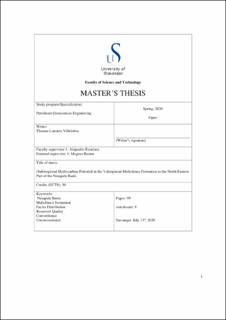| dc.description.abstract | Since the beginning of the 20th century, the Neuquén Basin has been the most important hydrocarbon producer in Argentina. Many different conventional plays have been explored and exploited, while, the unconventional exploitation in the Neuquén Basin is relatively recent and underdeveloped. The Valanginian Mulichinco Fm, known as a reservoir within the basin has been historically approached as a conventional reservoir. In more recent years it has also been exploited as an unconventional reservoir by deploying horizontal production wells and modern completion and fracking technology. The reservoir quality of the Mulichinco Fm varies throughout the Basin, which makes both production techniques relevant.
The general facies variability of the Mulichinco Fm is understood at a basin-wide scale, mainly from outcrop studies and well data, which are then used to understand the formation at the subsurface. However, the facies variation in the subsurface, especially towards the basin edges, is understudied. The purpose of this study is to understand the facies distribution of the Mulichinco Fm, how the facies variation affects the reservoir quality of the formation, and to understand the petroleum system including the Mulichinco Fm as the reservoir in the Northeastern region of the Neuquén Basin. This is done by correlating wells and seismic using key stratigraphy, interpreting the sequence boundaries containing the Mulichinco Fm, and interpreting the internal facies of the formation. The study identifies two tectono-sequences containing the petroleum system that consists of the Vaca Muerta Fm source rock, the Mulichinco Fm reservoir and the Agrio Fm seal. The stratigraphy is interpreted with the seismic and wells to produce structure, thickness, attribute, and petrophysical maps. A lower order sequence is identified for the Mulichinco Fm as well.
This is done by interpreting internal facies within the Mulichinco Fm using cutting descriptions, well logs, and seismic, which are then used to make facies maps. The reservoir properties are then studied through the various maps made. Further understanding of the facies distribution and reservoir properties within the region may be used for ongoing future conventional and unconventional exploration within the Mulichinco Fm. | en_US |
